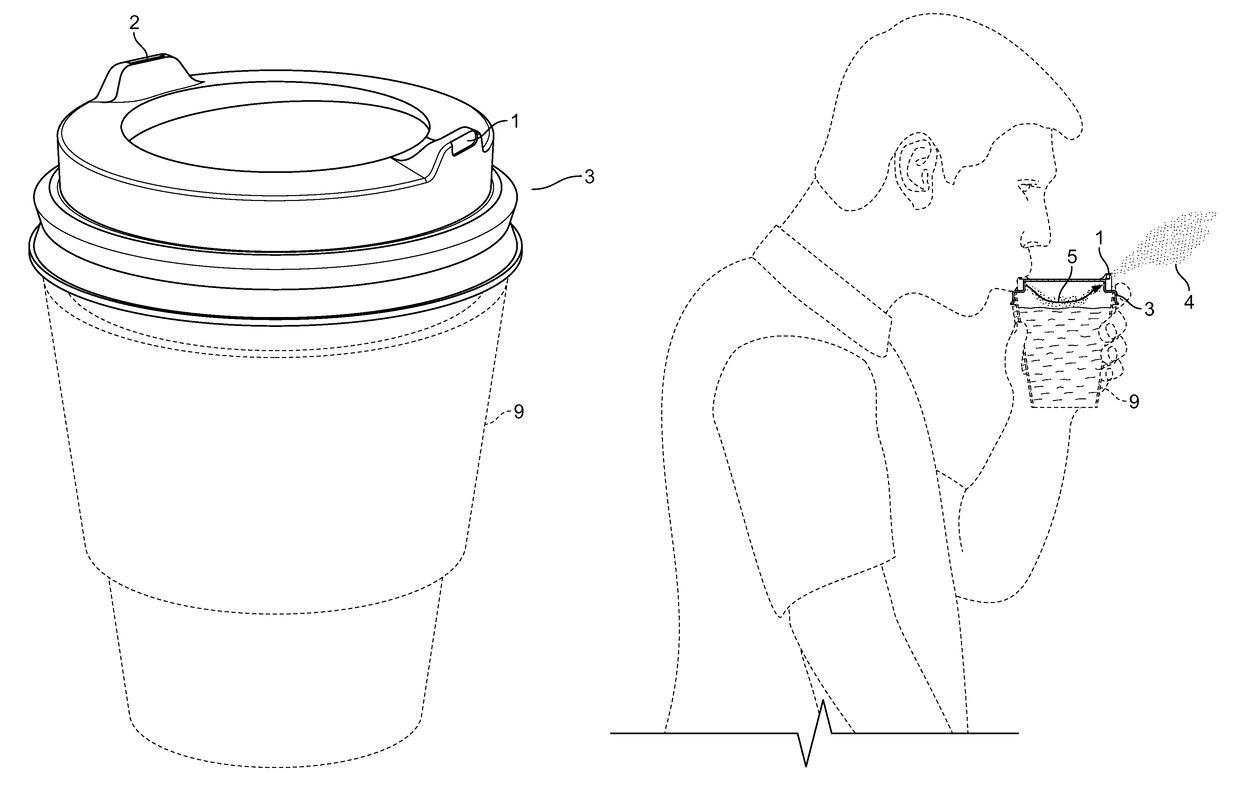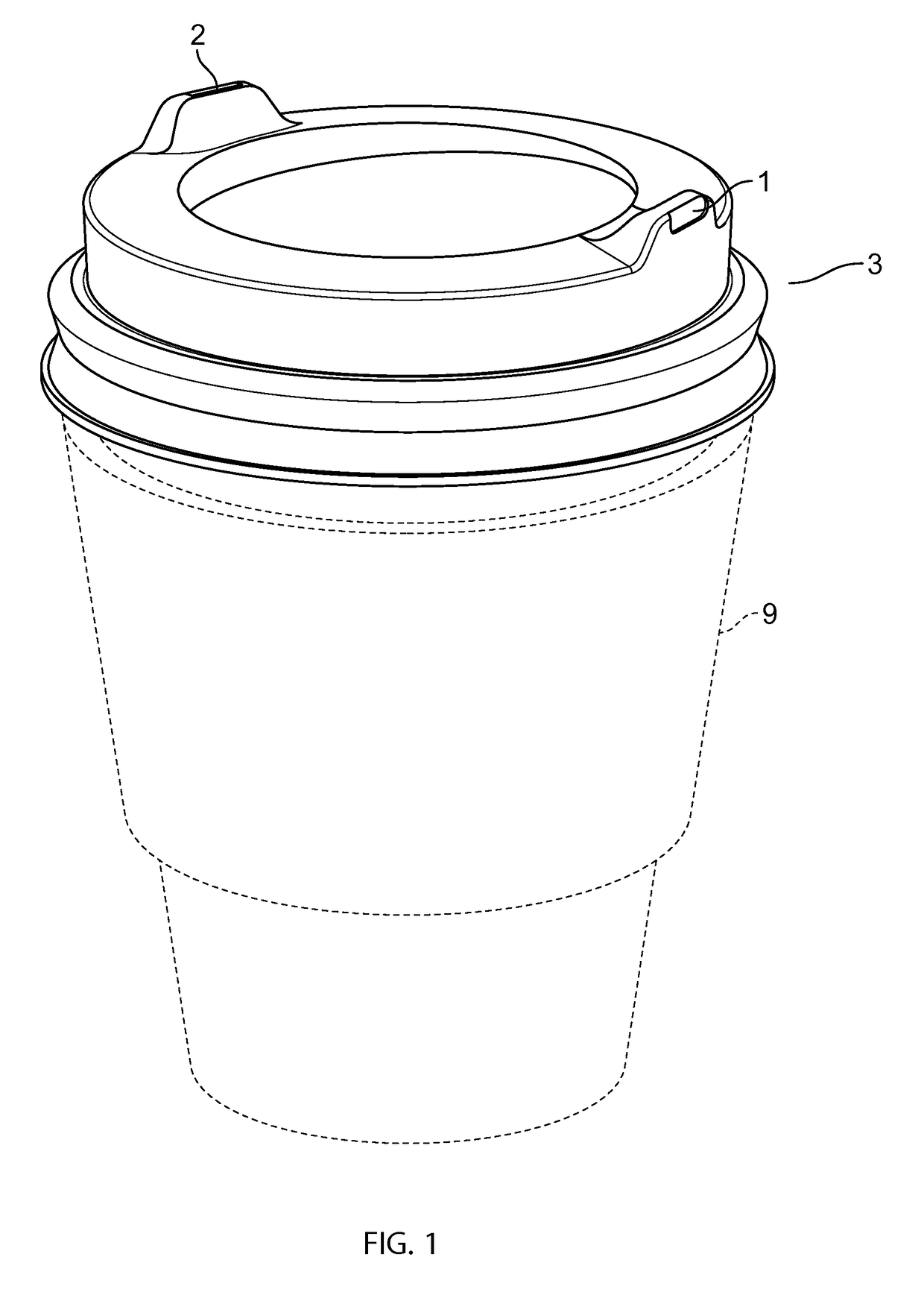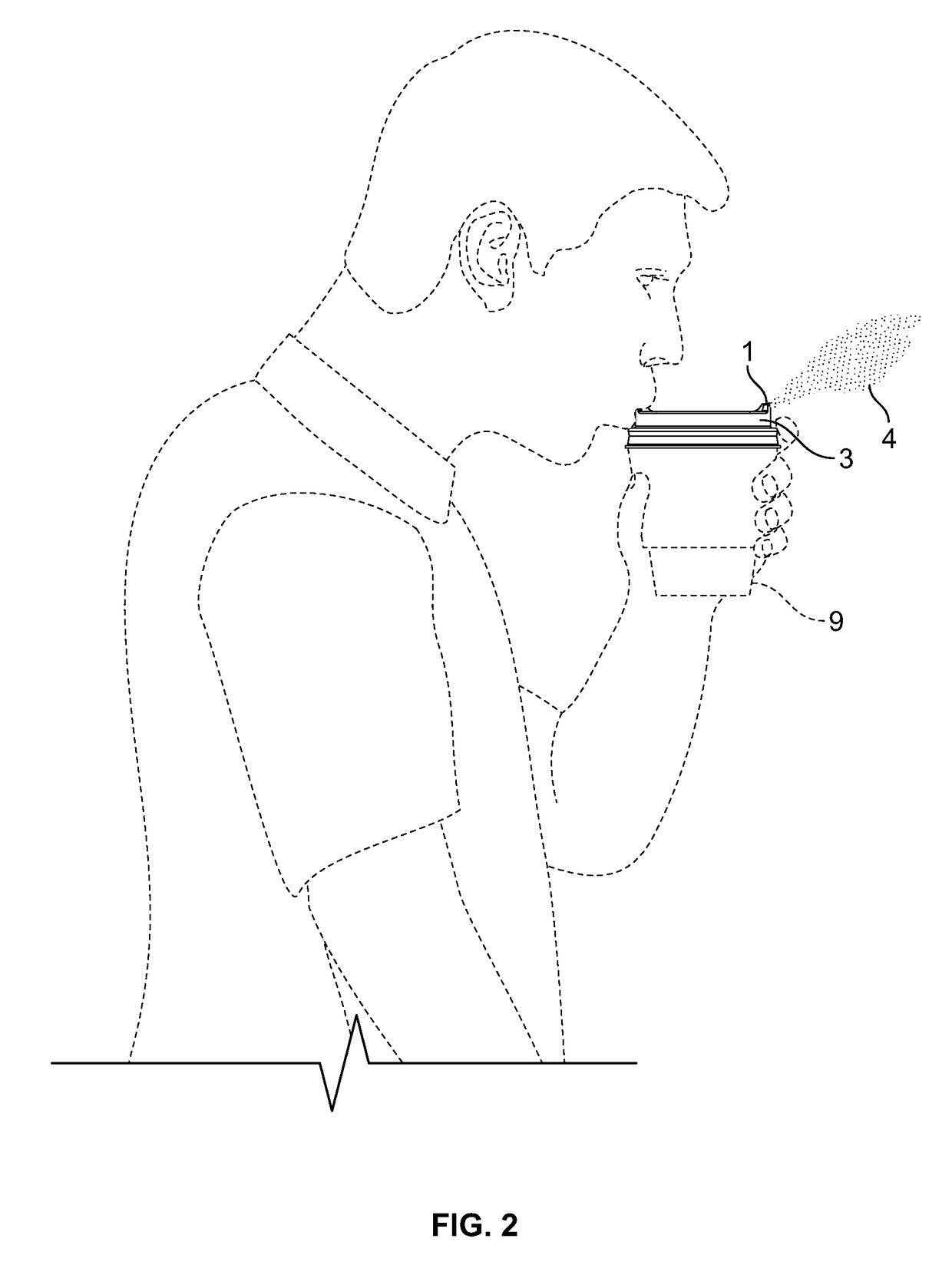Airflow cooling lid
a cooling lid and airflow technology, applied in the field of beverage containers, can solve the problems of slow change in this field, possible spillage, and burning of consumers' lips, mouths, and torsos from hot coffee, tea and other beverages, and achieve the effect of rapid and personalized optimal temperature for consumption, simple, effective, safe and convenient control
- Summary
- Abstract
- Description
- Claims
- Application Information
AI Technical Summary
Benefits of technology
Problems solved by technology
Method used
Image
Examples
Embodiment Construction
[0026]Referring to FIG. 1-5.
[0027]Cup, 9, is shows for exemplary purposes and is disclaimed.
[0028]One exemplary mode of carrying out the embodiment, though not exclusively, is manufacture of the lid, substantially as depicted in FIG. 1. At present I believe that this embodiment operates most efficiently, but other embodiments are also satisfactory.
[0029]With lids having sidewalls, 3 of FIG. 1, the exhaust opening, 1, may be placed on the sidewall or onto the upper surface of the lid diagonally opposite to the drinking opening, 2, or in any convenient location to achieve the result. With lids having no sidewalls, FIG. 5, the exhaust opening, 1, is placed onto the upper surface of the lid diagonally opposite to the drinking opening or in any convenient location to achieve the result.
[0030]One variation is to angle either or both openings so as to direct the driven exhaust, 4, away from the face of the consumer, as depicted in FIG. 2 AND FIG. 3.
[0031]As noted, depending on the embodime...
PUM
 Login to View More
Login to View More Abstract
Description
Claims
Application Information
 Login to View More
Login to View More - R&D
- Intellectual Property
- Life Sciences
- Materials
- Tech Scout
- Unparalleled Data Quality
- Higher Quality Content
- 60% Fewer Hallucinations
Browse by: Latest US Patents, China's latest patents, Technical Efficacy Thesaurus, Application Domain, Technology Topic, Popular Technical Reports.
© 2025 PatSnap. All rights reserved.Legal|Privacy policy|Modern Slavery Act Transparency Statement|Sitemap|About US| Contact US: help@patsnap.com



